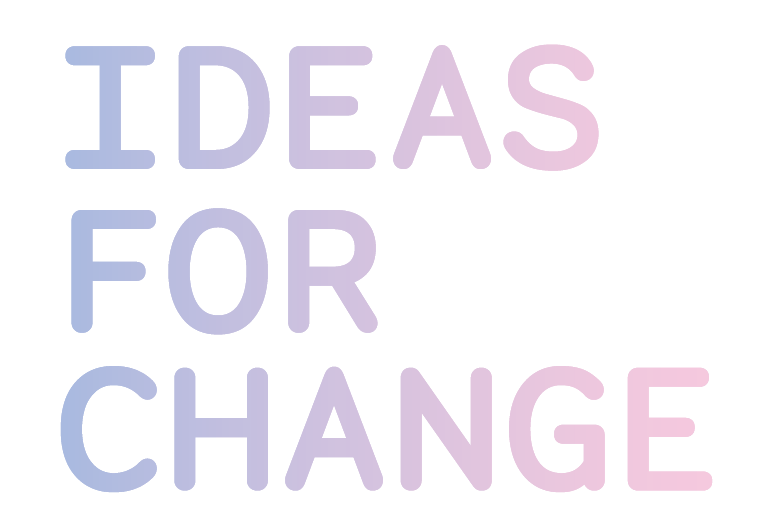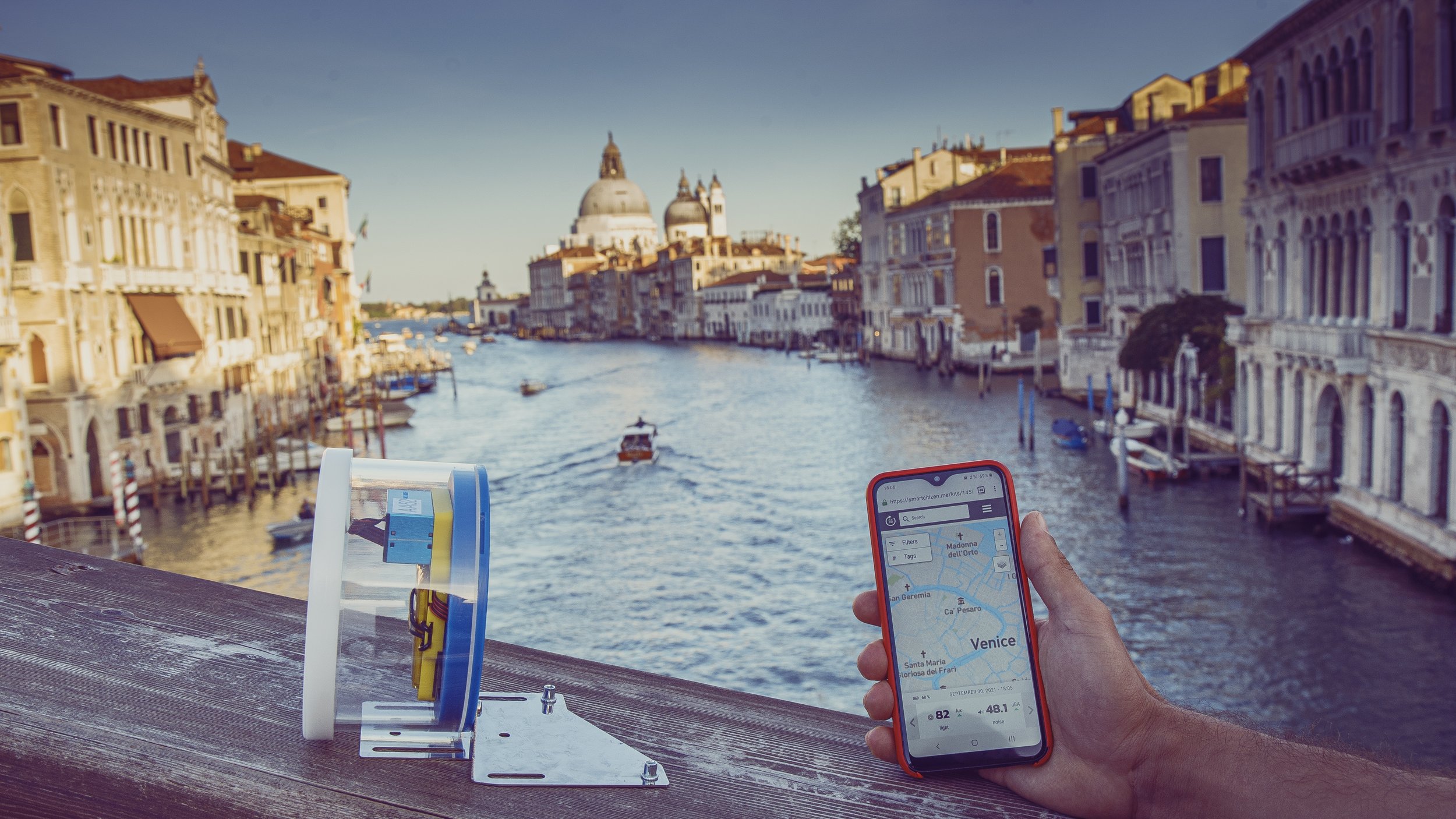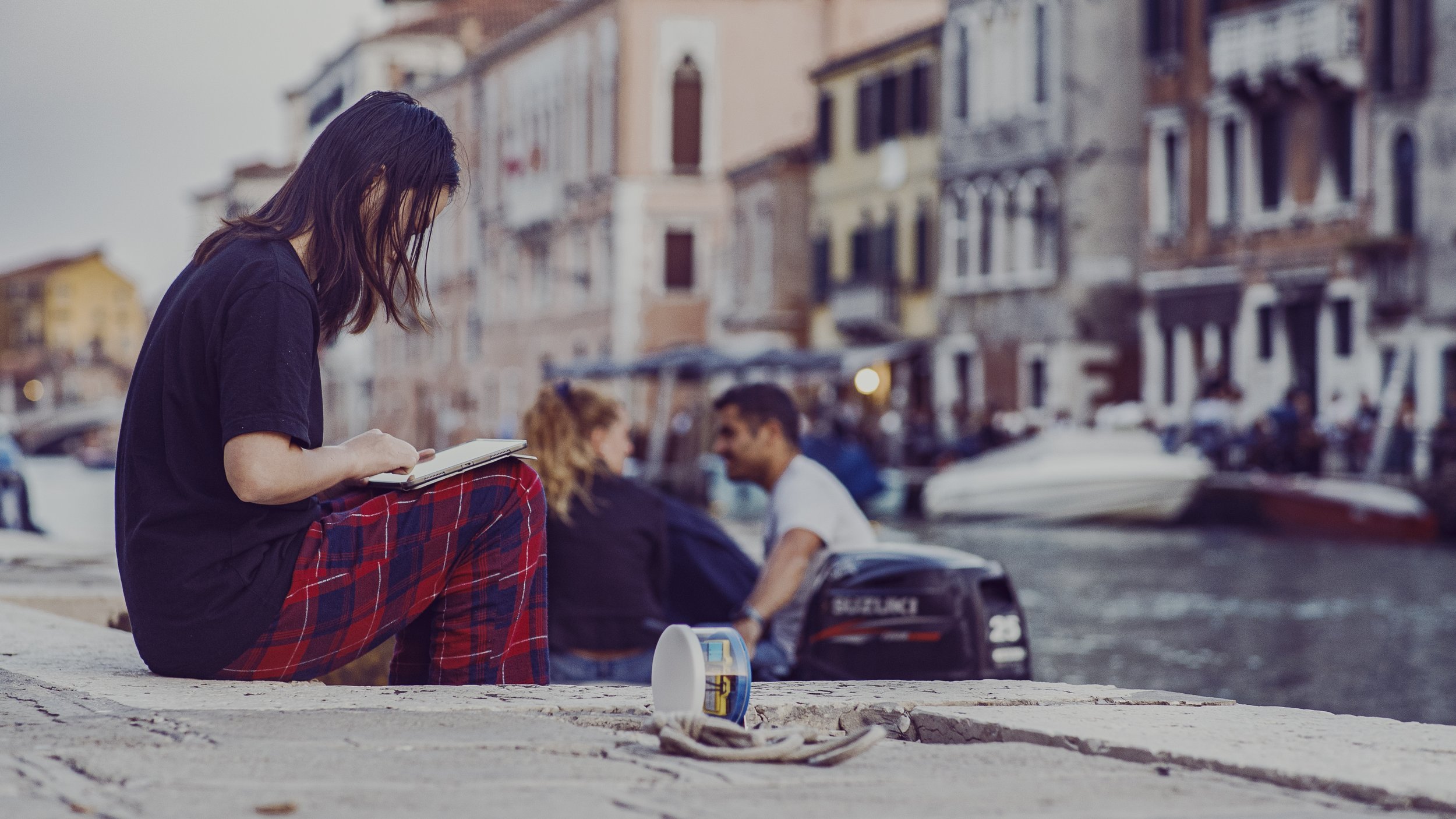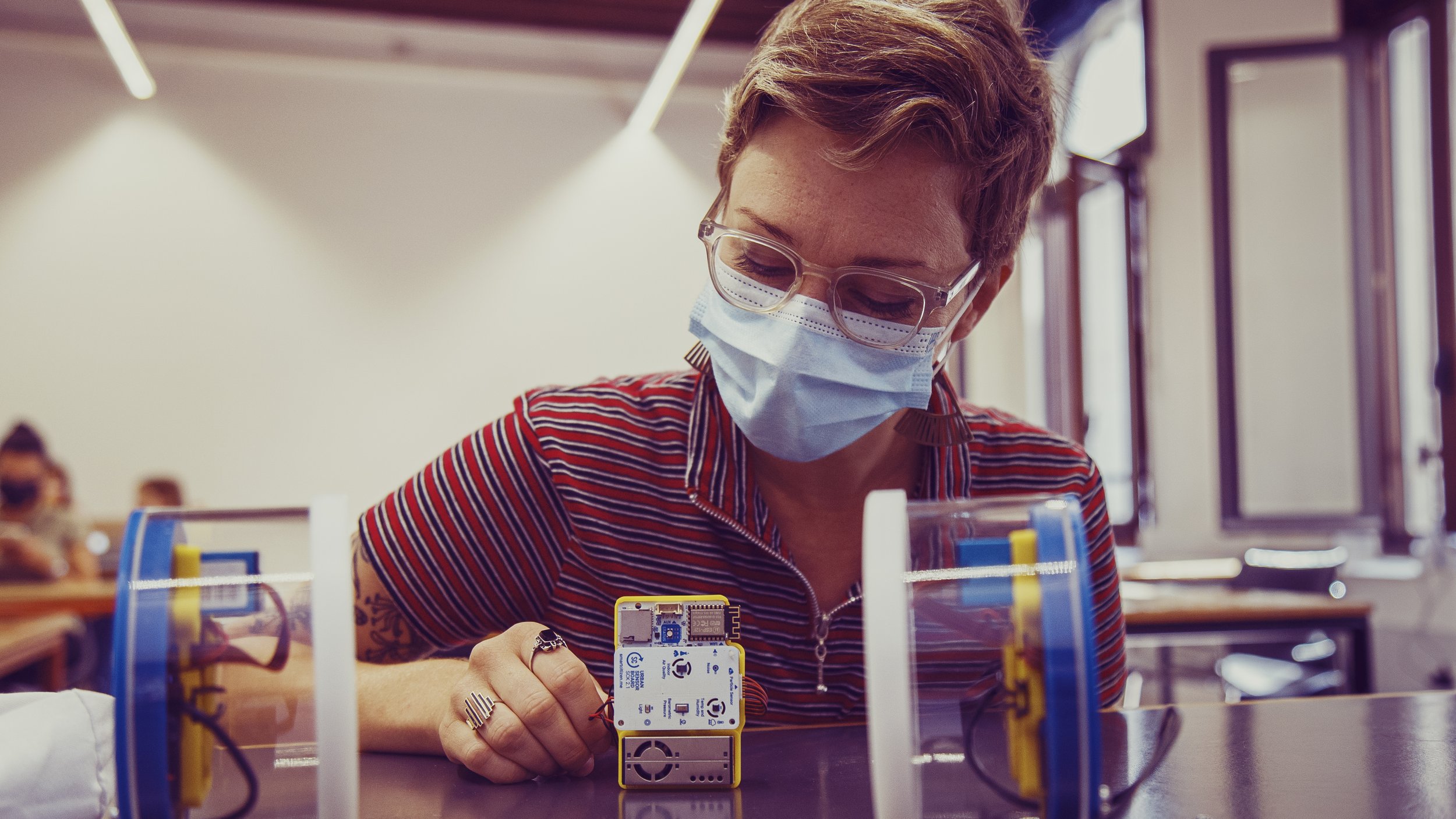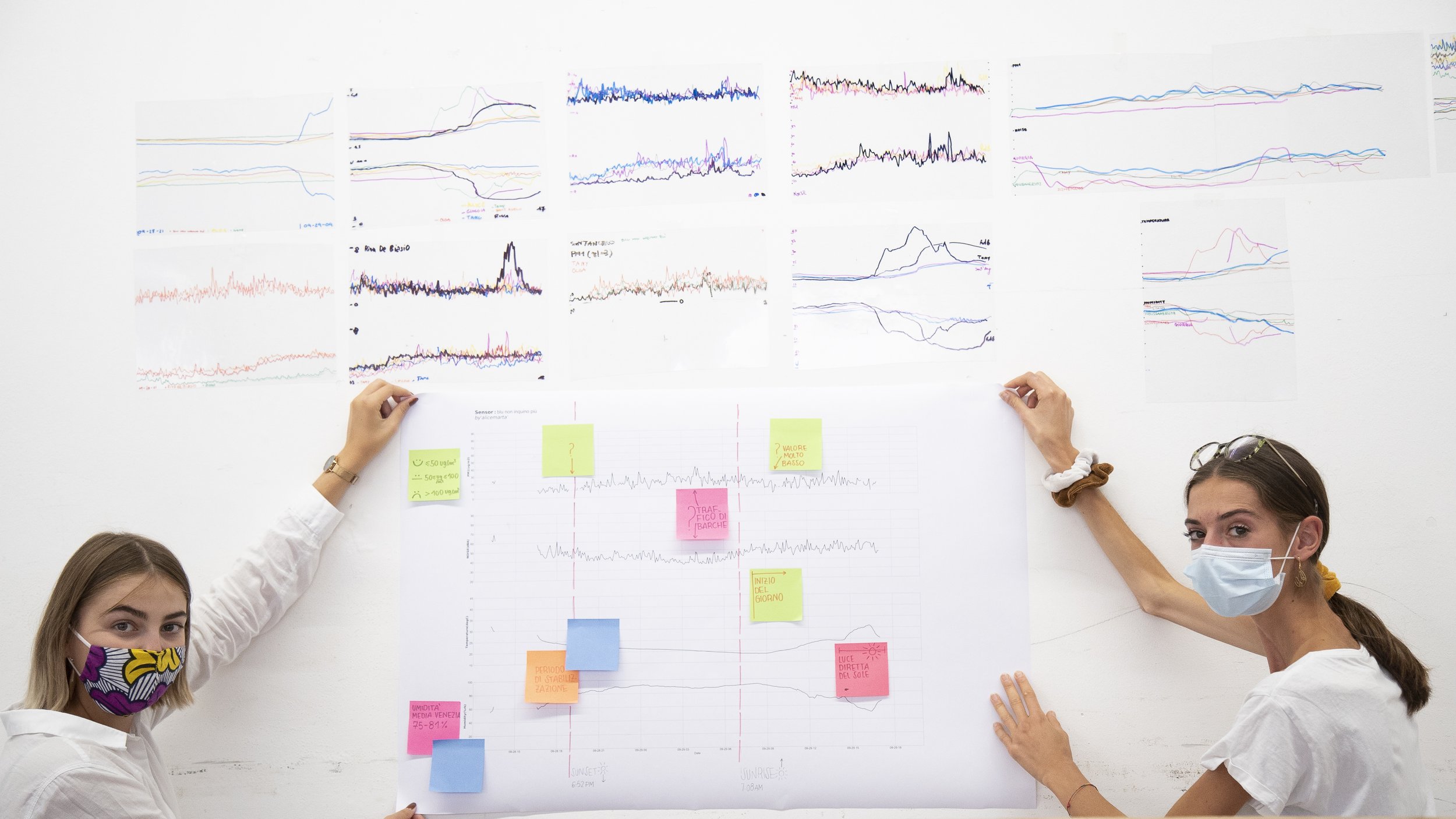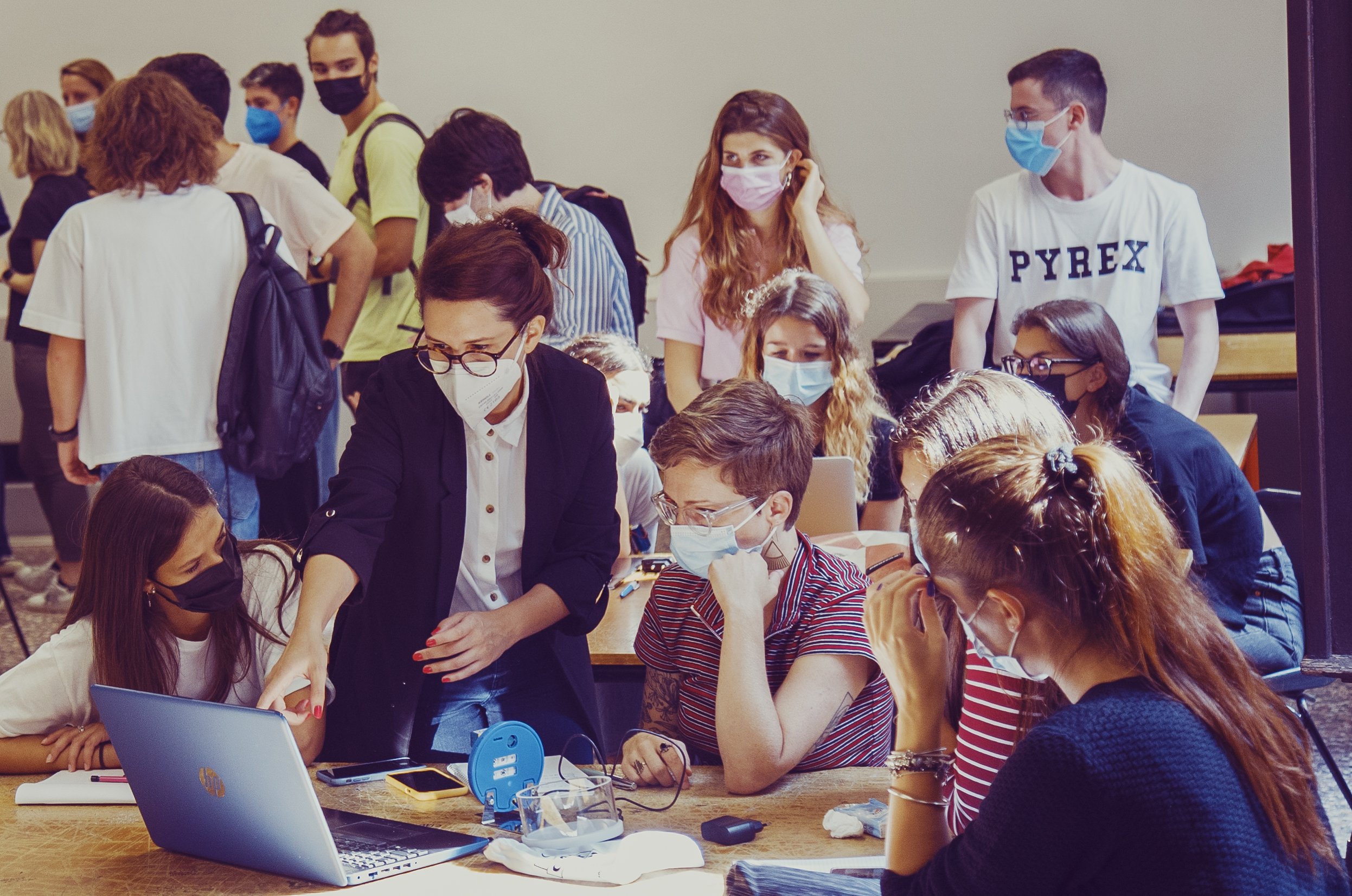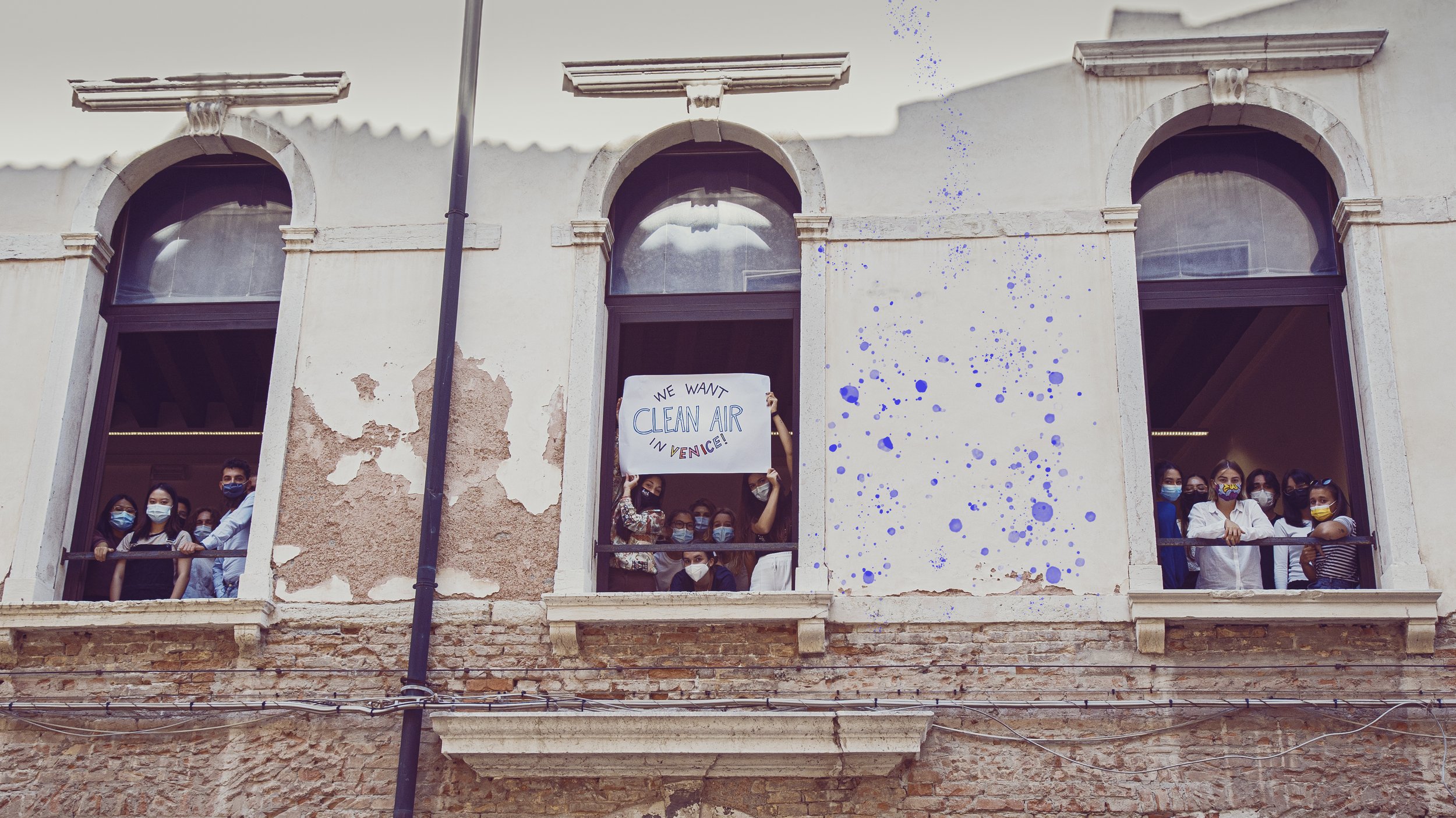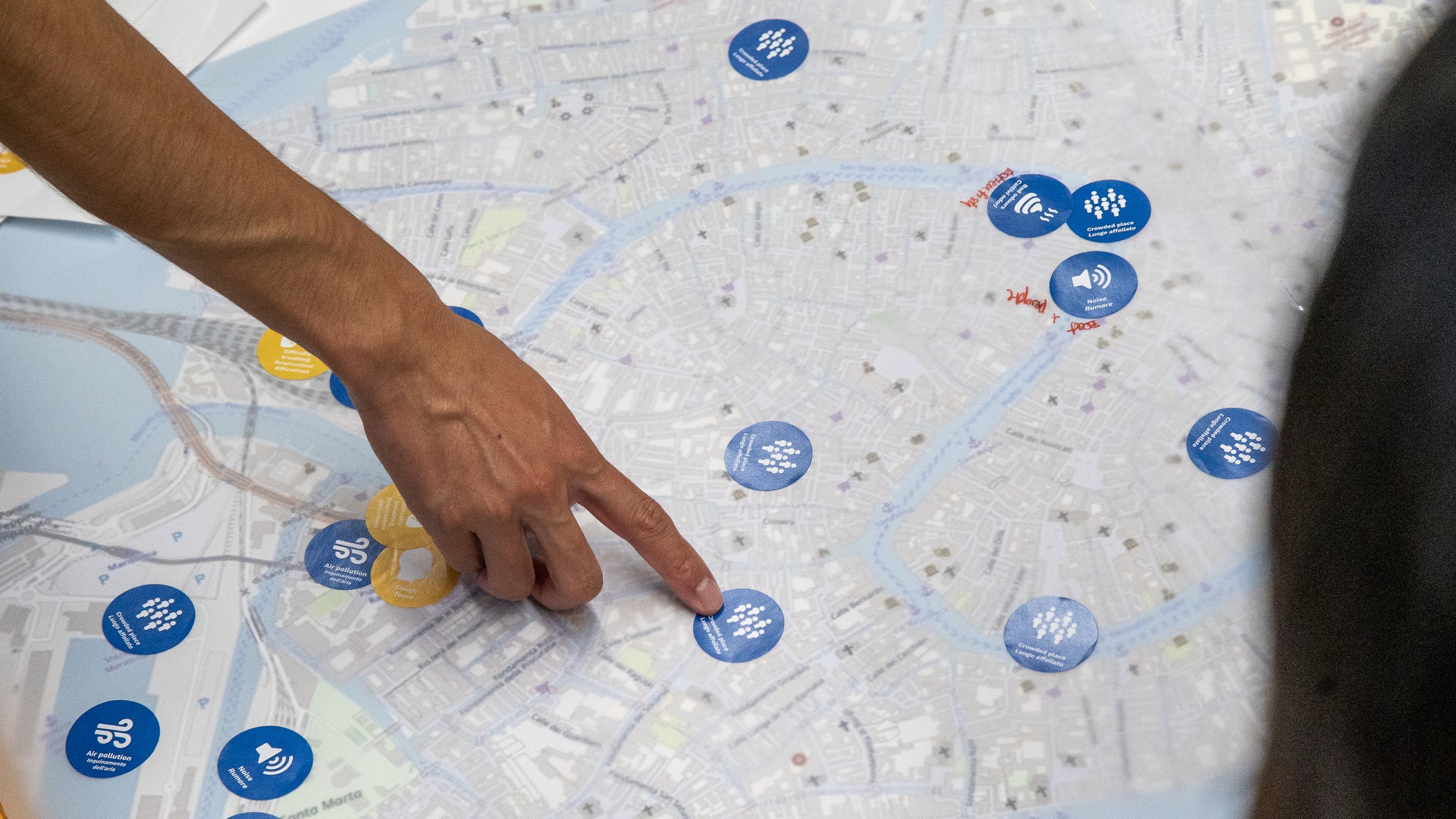The power of citizens' environmental data comes to Venice with VenicAir
By Lucía Errandonea, research, producer & Project Manager. (Originally published in Spanish)
Air pollution is in the spotlight and has been the protagonist of several citizen science projects. At Ideas for Change, we know that there will be no change and no improvement in the quality of life of people and the planet without involving citizens. For this reason, we are collaborating in the Catalonia - AirAriaAire initiative promoted by the Ramón Llull Institute, which was presented as a complementary initiative during the Biennale Architettura 2021 held in Venice at the end of September.
The project, in which a community of experts and entities dedicated to social innovation such as Fab Lab, IAAC, Open Systems - UB, 4Sfera, Ideas for Change and the Università Iuav di Venezia have collaborated, proposes a revision of the smart cities concept where the use of technologies is not the solution, but a tool to constantly renew society. Highlighting the role of architecture and urban planning, the exhibition sought to address air pollution and the importance of citizen participation in gathering evidence.
Co-creation to investigate air pollution in Venice
Over three days, Ideas for Change and FabLab organised a series of workshops with citizens called "VenicAir" in which, through a participatory strategy of citizen sensorisation, we identified and designed environmental kits to measure air quality and thus contribute to building more sustainable and healthy cities.
On the first day of the workshop, we started by identifying together with the participants places in Venice with environmental problems: air pollution, noise, water pollution, bad smells, etc. The aim was for the communities to indicate the places or areas where these problems are found on a map of Venice. In turn, we asked them to show their perception of how these issues affect their health: whether it causes coughing, itching, red eyes, congestion, headaches, etc. We then collaboratively defined the distribution of Smart Citizens Kits, to collect air quality information at different points in the city.
With this decided, we moved on to the part of introducing the technology and setting it up so that we could install the kits in the participants' homes. We distributed 10 sensors throughout the city and collected data for 24 hours. During that second day, we kept an open communication channel for possible problems and went to different houses to do interviews and document the intervention.
On the third and last day, we jointly analysed the collected data and compared it between the different sensors. In an iterated activity, we discussed the data obtained and looked for reference values according to health and environmental organisations.
We tried to understand the behaviour of the data. For example, one of the participants detected that in the morning there was an increase in air pollution (NO2 and PM) because cars in front of his building were arriving or leaving, generating a concentration of combustion in the area.
Finally, we moved on to action design! Through an activity where participants imagined a variety of possible futures for citizen sensing in Venice and the expected outcomes of the study. By working from the vision of the past, participants can articulate the conditions, resources, stakeholders and events that could help achieve those outcomes. Some ideas were tree islands that could absorb pollution, transitioning all boats and motorboats to clean energy, and so on.
The aim of these citizen science sessions was to empower communities to be part of the research and to foster improvements to issues that affect and concern them. The sensors remained in the community to continue measuring and collecting evidence to improve the quality of life in Venice.
The reflections and conclusions of the study can be found in the "Quaderns Biennale" published by the Col·legi d'Arquitectes de Catalunya.
Keep reading:
Did you like this article?
Receive more content like this in your inbox!
